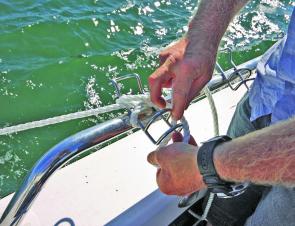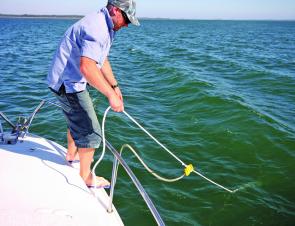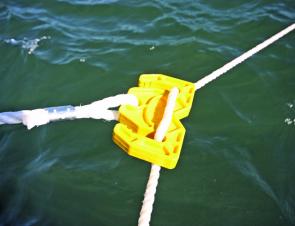Basic boat handling skills are learnt over time. As they say, practice makes perfect and the more you venture into the big blue the better and easier the basics become. One boat handling skill that can be very useful to boaters – but which many may not be familiar with – is how to avoid yawing.
Yawing occurs while the boat is under anchor. Often it is caused by the wind blowing more strongly than the current, making the boat shift from side to side. Likewise, some boats may have a large cabin or canopy that is prone to catching the wind, which can also cause this effect.
Anglers who fish in Port Phillip Bay know all too well that yawing is a major problem. This mainly occurs from Mt Martha and Altona to the top of the Bay, where the current isn’t as strong.
Those casting a bait in Western Port still deal with yawing but usually only when approaching a tide change, as the force of the current weakens and the strength of the wind takes over.
For an angler, yawing poses many problems even when the wind is low. When the boat moves from side to side, your lines will become slack and the boat moves over the top of them. This creates line tangles and often missed bites from fish; all in all you can become very frustrated and have a bad day on the water.
To avoid the boat from yawing, a small simple device called an Ezy Lay can take this problem away. The Ezy Lay bridle system is designed for just one reason – to keep your boat in the one position while at anchor.
The Ezy Lay system is a small length of rope with a yellow M-style plastic clip attached to one end.
The Ezy Lay works by weaving the M-clip through the anchor rope to attach to the rope. The opposite end of the Ezy Lay rope can then be tied off onto a bollard or cleat on the transom.
To set the Ezy Lay correctly, let out some anchor rope while simultaneously carrying the end of the rope towards the transom. The more anchor rope you let out the further away the M-clip will move down the anchor rope. After you have it approximately where you want it, you can pull tight the end of the Ezy Lay rope and secure it to the transom bollard.
While pulling the end of the rope tight, the stern will be pulled around towards the anchor rope. This creates a triangle in the rope between the anchor, bow and stern of the boat, keeping the boat from yawing.
If you find the boat continuing to yaw after setting the Ezy Lay, let more anchor rope out and pull the Ezy Lay rope tighter, pulling the stern around even more. There is no recommended length that you need to let out, it depends on what the wind and waves are doing. The more the end of the rope is tightened, the less yawing will occur. At times I have had the anchor rope almost secured to the transom to stop the boat from yawing.
The Ezy Lay system is very safe for all boats to use but there are still some things you need to be aware of before using it.
It is designed for use in all wind conditions so therefore you must be aware of the conditions before setting it up. If you have a large swell or chop on the water, you can run the risk of having waves breach the gunwales sending a lot of water onto the deck. During these situations you need to take extra care that bridling the boat is safe.
Once the bridle system is in place you’ll find the boat rocks from side to side rather than from front to back, which is more typical when at anchor. This can be uncomfortable, but it is often better than yawing from side to side.
Bridling your boat can eliminate many problems while fishing. If you haven’t seen this device and yawing is an issue for you, I suggest you drop into your local fishing tackle or boating store to pick one up. At around $40, they can end a lot of frustration while on the water.
Reads: 34563
Secure the Ezy Lay rope to a bollard or something sturdy.

Clip the Ezy Lay onto your anchor rope and let the anchor rope go out while simultaneously feeding out the Ezy Lay rope. Then pull the stern of your boat around and fasten the Ezy Lay rope towards the rear of the boat. If yawing continues, pull the Ezy La

Once in position, a triangle is created between the anchor rope and Ezy Lay rope. This stops the boat from yawing.

The Ezy Lay clip should sit firmly and not slip once connected.




